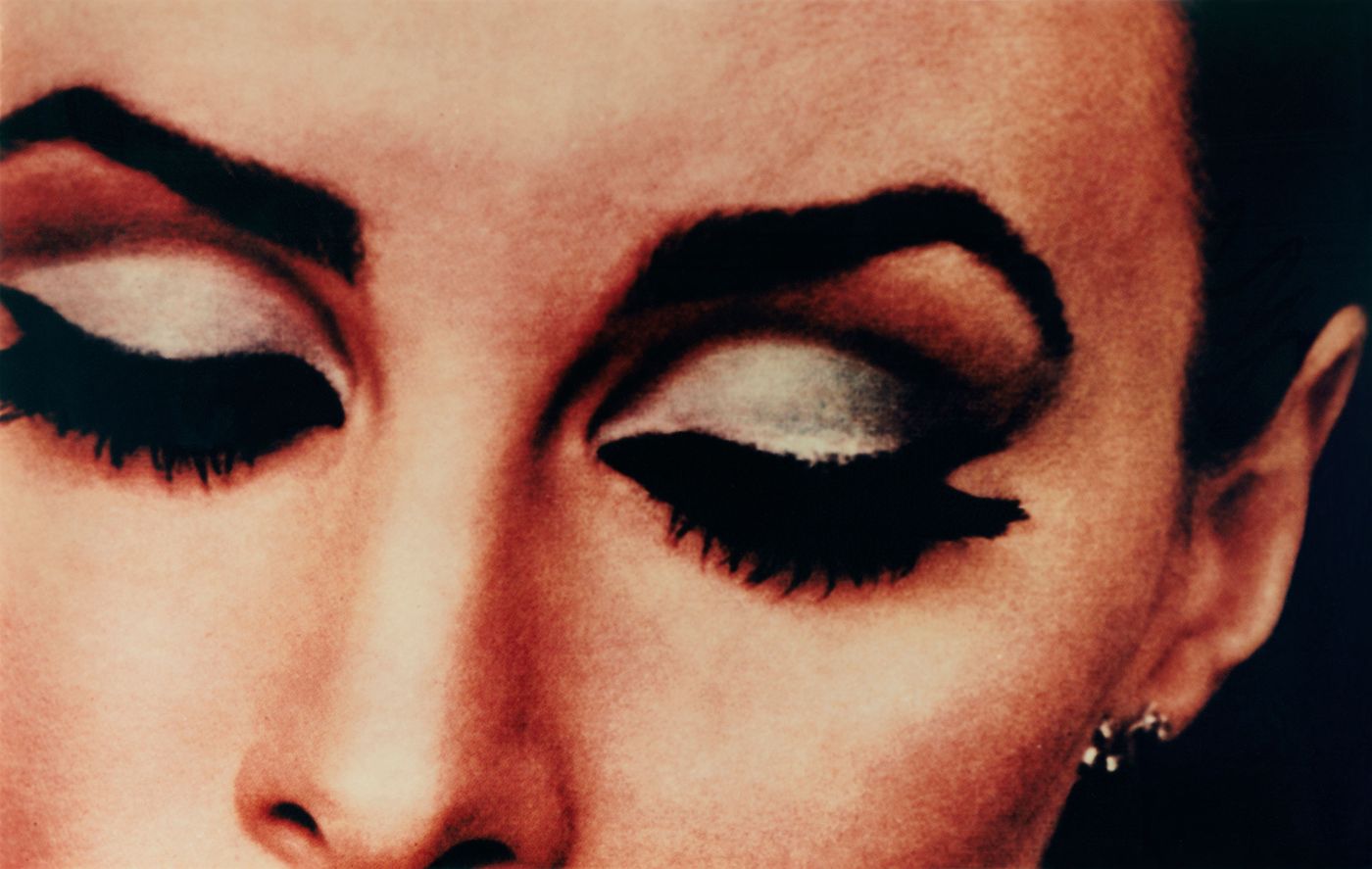
Skarstedt London revisits the ‘Picture Generation’ with Double Take Exhibition
Words by Siska Lyssens
Location
London, United Kingdom
Skarstedt London revisits the ‘Picture Generation’ with Double Take Exhibition
Words by Siska Lyssens
London, United Kingdom
London, United Kingdom
Location
In the Tom Croft-designed Skarstedt gallery in Central London’s St James’s, the white-cube-prescribed white walls, high ceilings and pale natural wood floors are serene and welcoming. The gallery, owned by Per Skarstedt, opened here in September 2016. Less than a year after relocating from their Old Bond Street premises, it still has the patina of freshness.
Per Skarstedt started out as a collector, buying his first piece, a Cindy Sherman, at the age of 23. Now the owner of two galleries in NY and one in London, Skarstedt focuses on contemporary European and American art, and he often ssingles out a particular period in an artist’s life. For the current London show, Skarstedt has gathered the works of nine artists who share a cross-generational interest in the concept of photographic appropriation. ‘Double Take’ looks at how the power of pictures – supposed documents of veracity – has been questioned by the selected artists, beginning from the 1960’s until today.
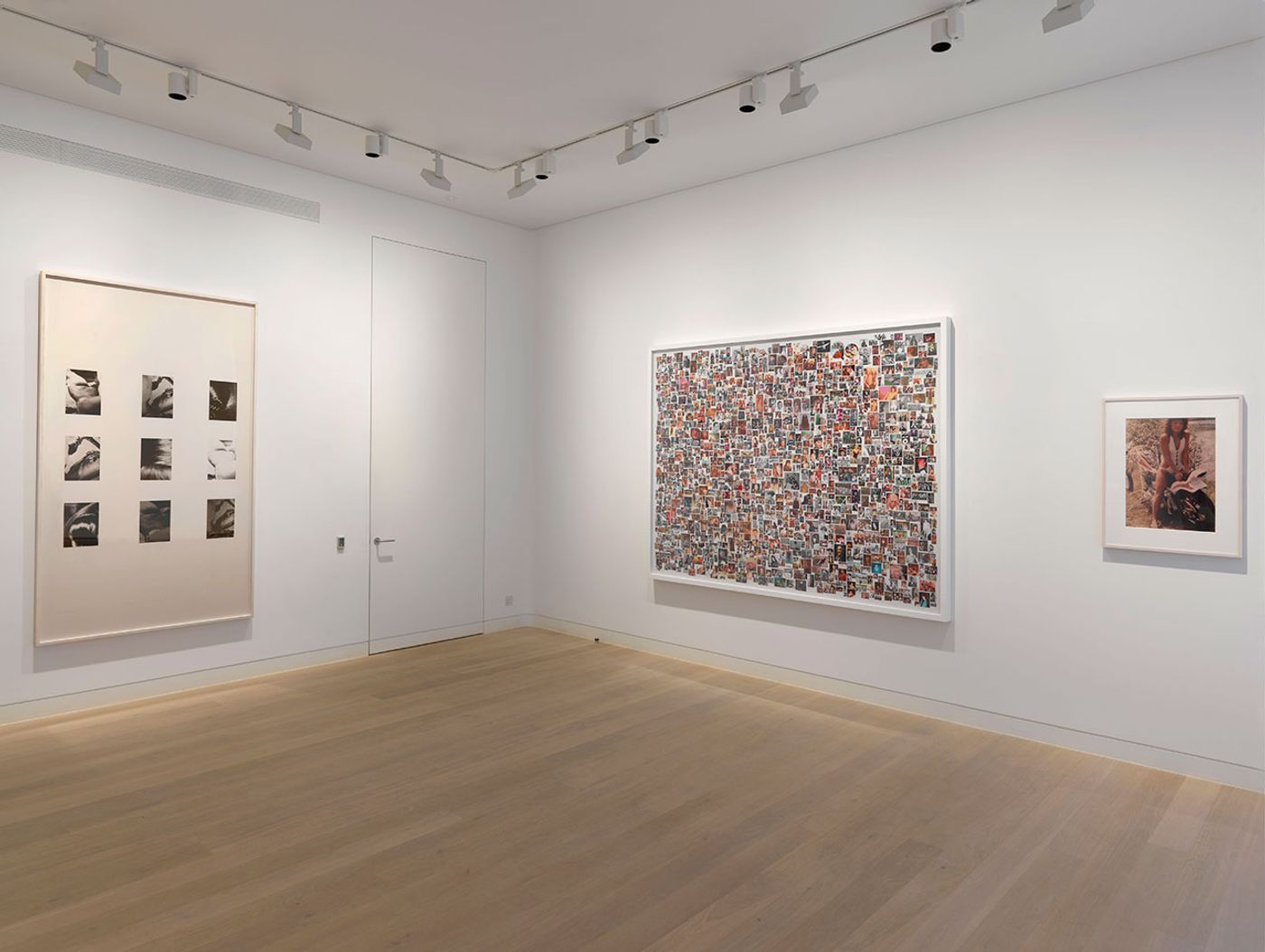
Double Take exhibition view. Courtesy Skarstedt Gallery, London.
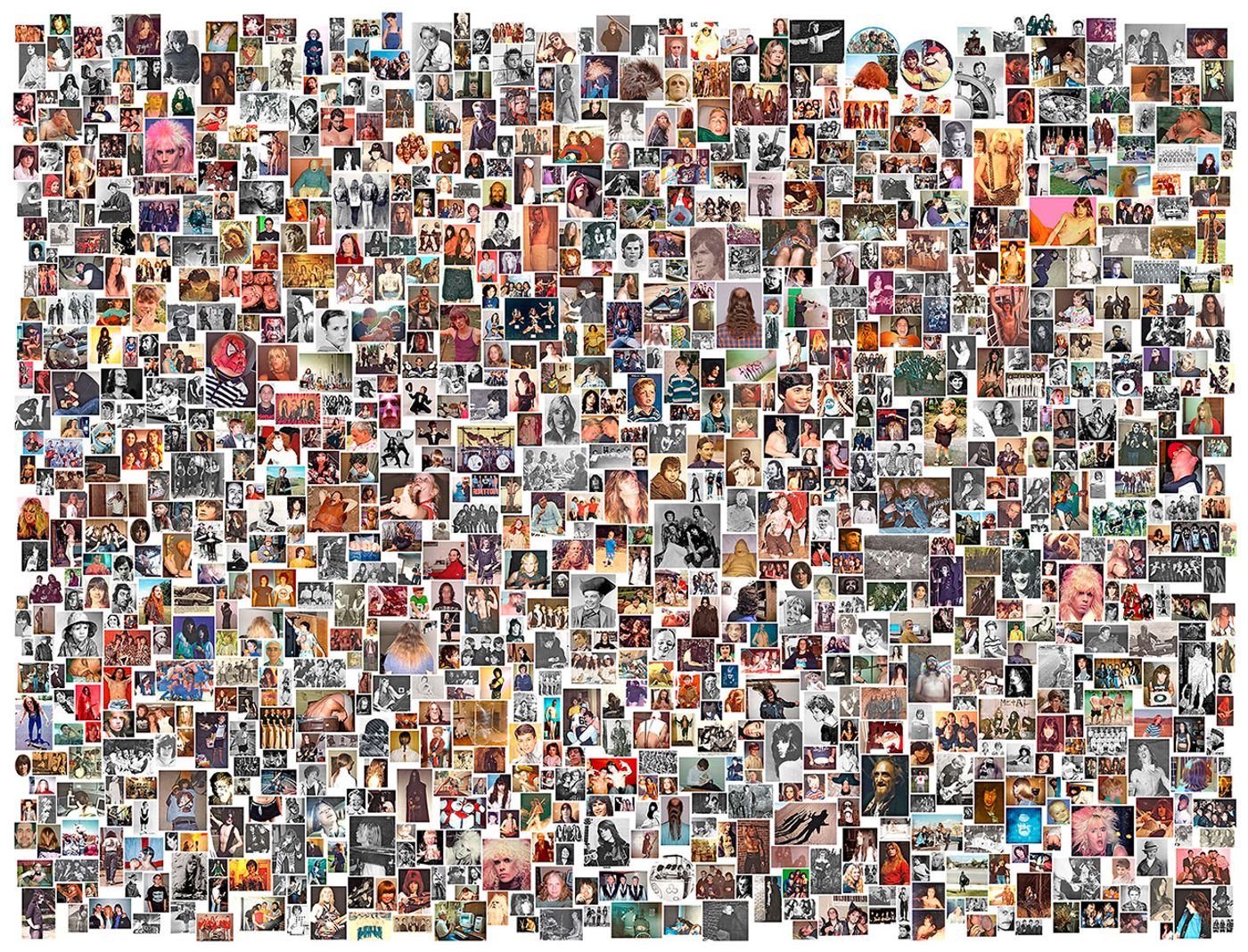
Steven Shearer (b.1968), Guys, 2005. digital c-print. 73 1/4 x 95 in. (186 x 241.3 cm) . Copyright the artist, courtesy of Modern Art London; Galerie Eva Presenhuber, Zürich.
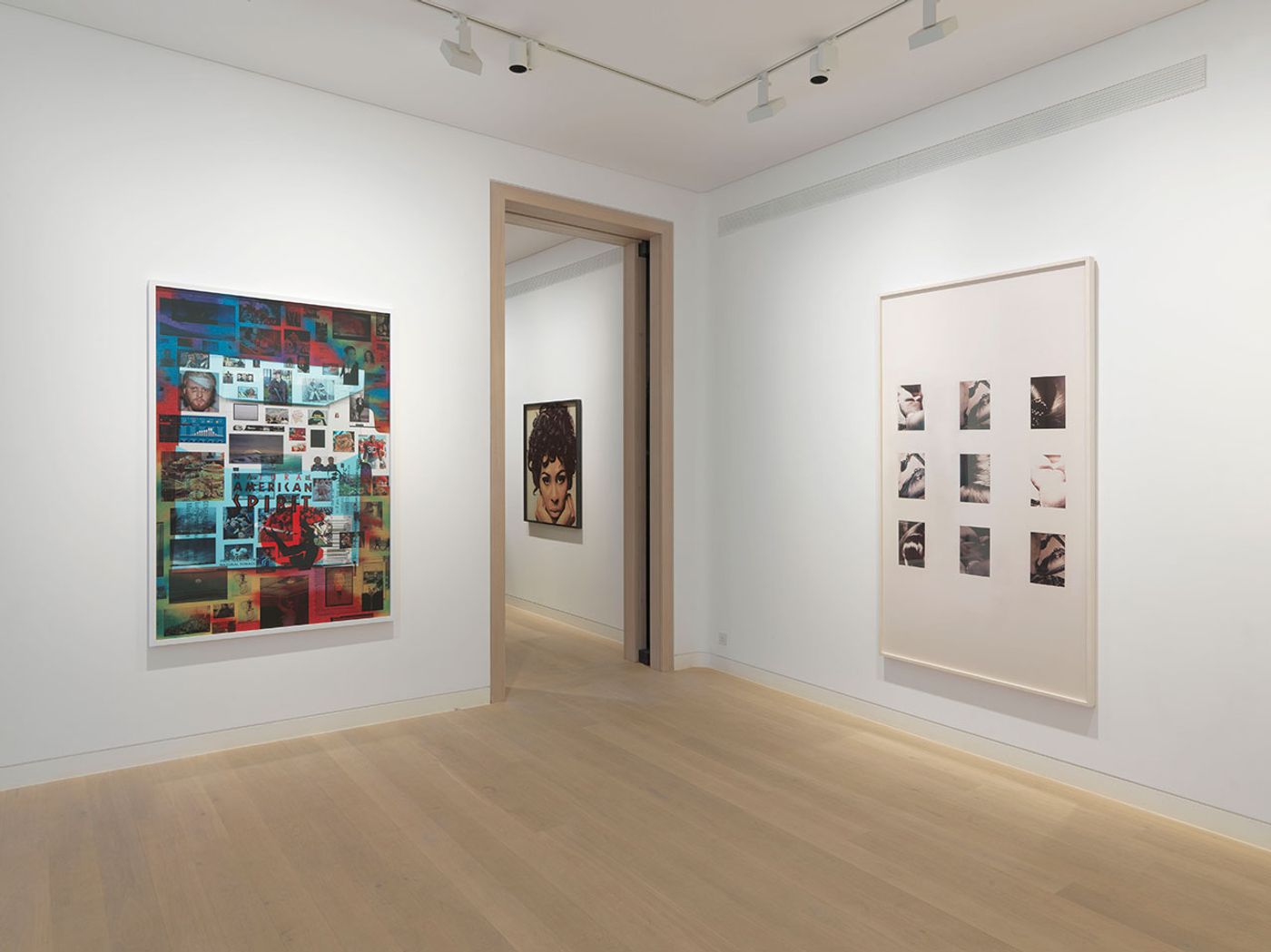
Double Take exhibition view. Courtesy Skarstedt Gallery, London.

Roe Ethridge (b.1969), Pic 'n Clip 9, 2016, dye sublimation print, 72 x 48 in. (182.9 x 121.9 cm). Image Courtesy of the Artist and Andrew Kreps Gallery, New York.
Starting with Robert Heinecken’s famous series ‘Are You Rea’, from 1964-1968, the preoccupation with photographs that drives these works is evident. For his ‘photograms’, or image grids, Heinecken used a contact print technique that allowed both sides of a magazine page to be printed, resulting in the ghostly presence of a commercialized image –then superimposed, reframed and de-referentialized.
Adjacent spaces hold works by Barbara Kruger, Louise Lawler and Richard Prince, shown together with younger artists including Anne Collier, Steven Shearer, Roe Etheridge, Hank Willis Thomas and Collier Schorr. Playing with the visual connotations that advertising exploits, Barbara Kruger reminds us of the imperative slogans and idealized beauty that photographic ads force upon us with her witty re-arrangements in Untitled (Your Gaze Hits the Side of My Face) and Untitled (Your Fact is Stranger than Fiction).
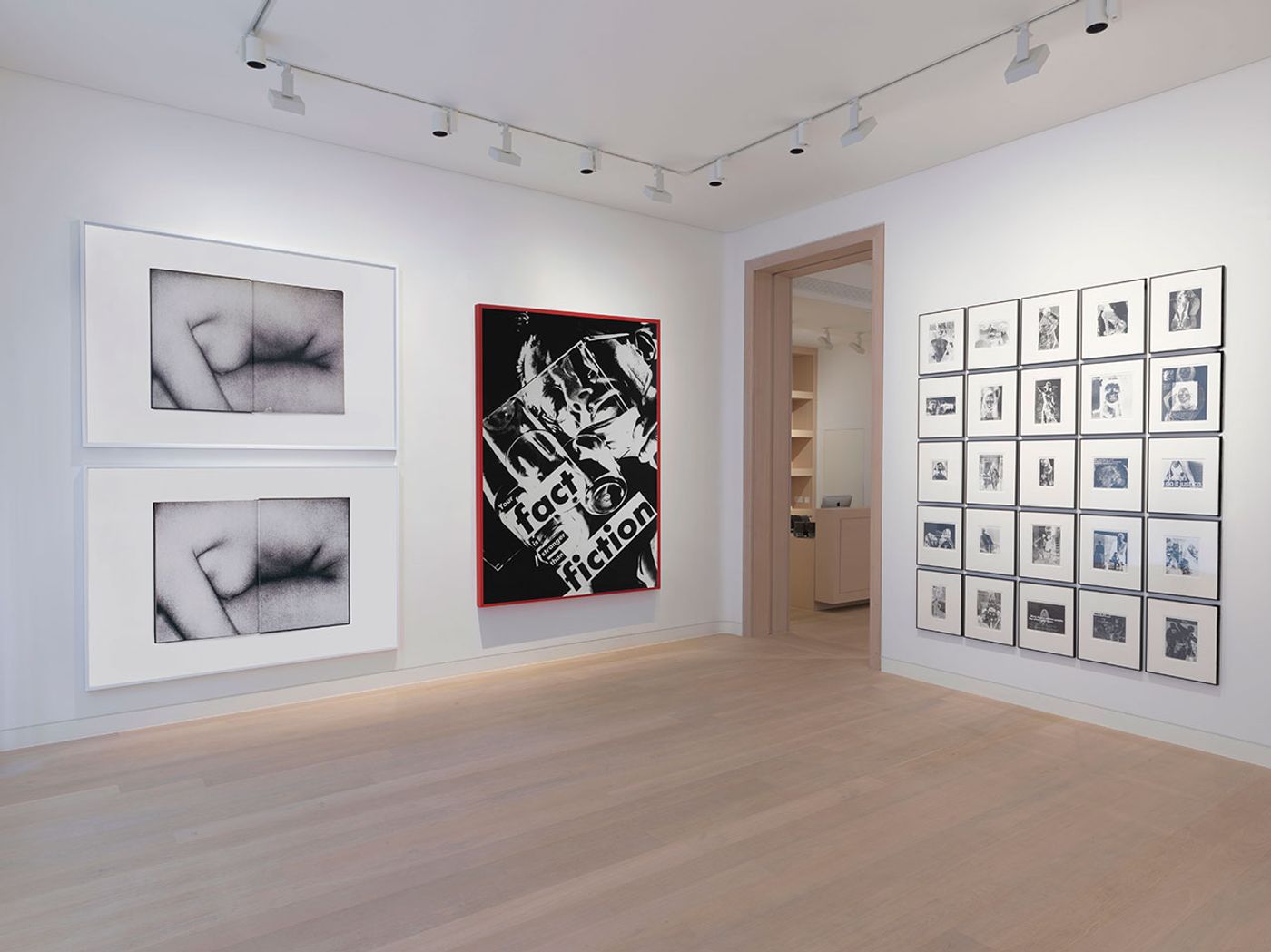
Double Take exhibition view. Courtesy Skarstedt Gallery, London.
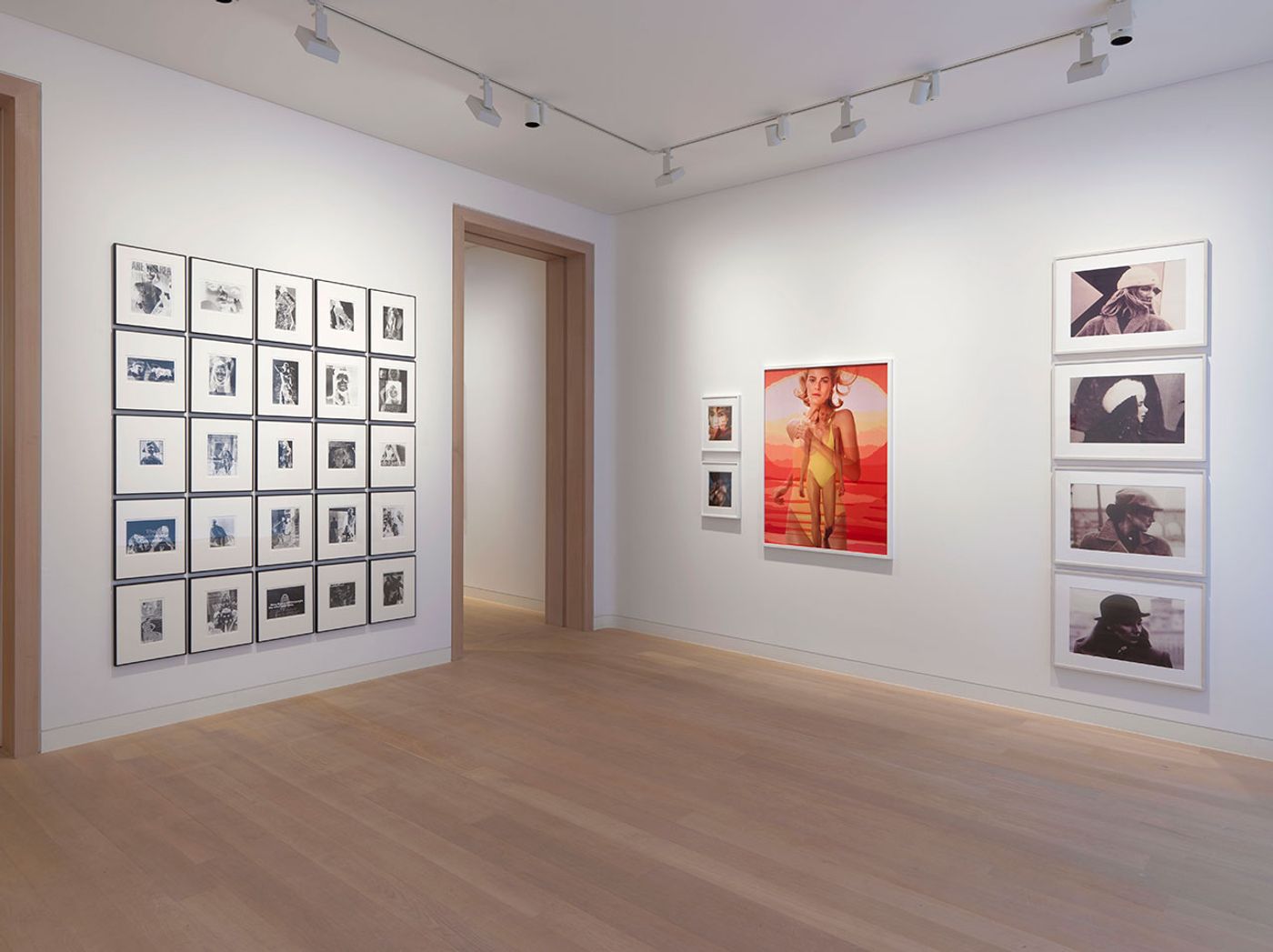
Double Take exhibition view. Courtesy Skarstedt Gallery, London.
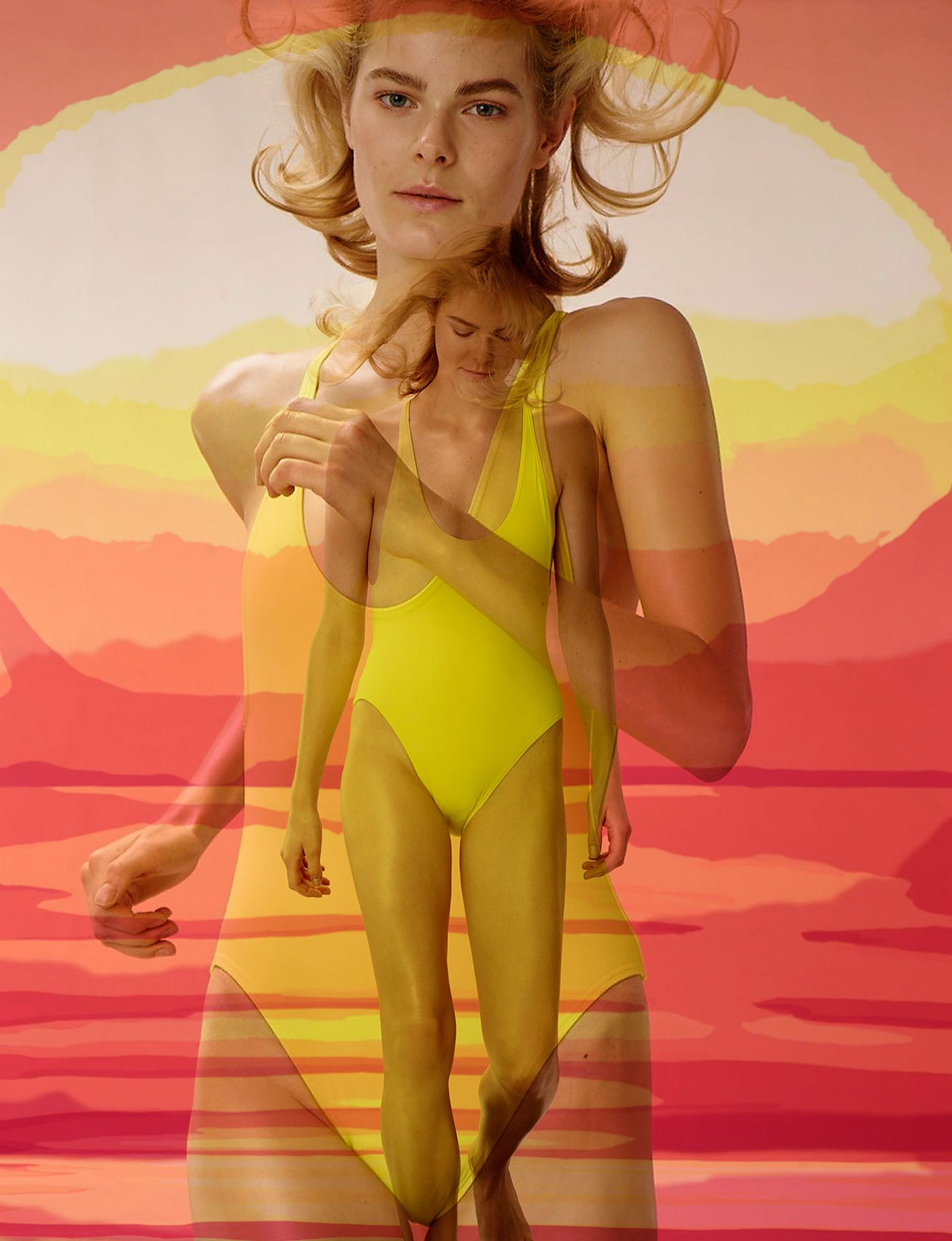
Roe Ethridge (b.1969), Double Jess Gold, 2015, dye sublimation print, 53 x 40 in. (134.6 x 101.6 cm). Image Courtesy of the Artist and Andrew Kreps Gallery, New York.
Selectively borrowing from existing images, all of the artists examine how commercial imagery shapes our perceptions of the world and ourselves. Richard Prince in particular breaks down the fantasy of magazine editorials and advertising in his photographic series Untitled (Four Women with Hats), which emphasize the various staged options of one idea.
Prince’s Untitled (eyelashes) is strategically positioned at the other end of the room to Hank Willis Thomas’ Why Wait Another Day to be Adorable? Tell Your Beautician "Relax Me.", an image lifted from a hair relaxer ad that paradoxically seems to elevate black beauty by promoting a product that eradicates black hair texture. Thomas, who was present at the opening, spoke about the effect of popular culture’s overwhelming whiteness on the black consciousness, an issue that resonates with the very core of concept appropriation and empowerment through ownership: taking the images that surround us and giving them an alternative meaning.

Double Take exhibition view. Courtesy Skarstedt Gallery, London.

Hank Willis Thomas, Why Wait Another Day to be Adorable? Tell Your Beautician "Relax Me.", 1968/2007, Lightjet print, 56 3/4 x 50 in. (144 x 127 cm.) sheet. Courtesy of the artist and Maruani Mercier Gallery, Brussels / Belgium.

Louise Lawler (b.1947), Nude, 2002-2003, cibachrome print (museum mounted), 60 x 40 x 2 in. (152.4 x 101.6 x 5.1 cm). This work is from an edition of five. © Louise Lawler, courtesy of Metro Pictures, New York.
As referencing and re-appropriation are eternal themes in history or art, these works carry their own weight within the canon. Prince’s Cowboys reinterpret what the American Dream looks like, taking a self-reflexive and critical stance on how media manipulation alters meaning. Blurring the boundaries between original and reproduction, reality and images, each one of these artists opens up new avenues for the viewer to investigate – especially in our current over-instagrammed world – and how we consume and regurgitate visuals. Steven Shearer’s ‘Guys’ could be the Google Image result of a search for the term in the title – and it is, though aestheticized - and it is very much similar to the way images come toward us today.
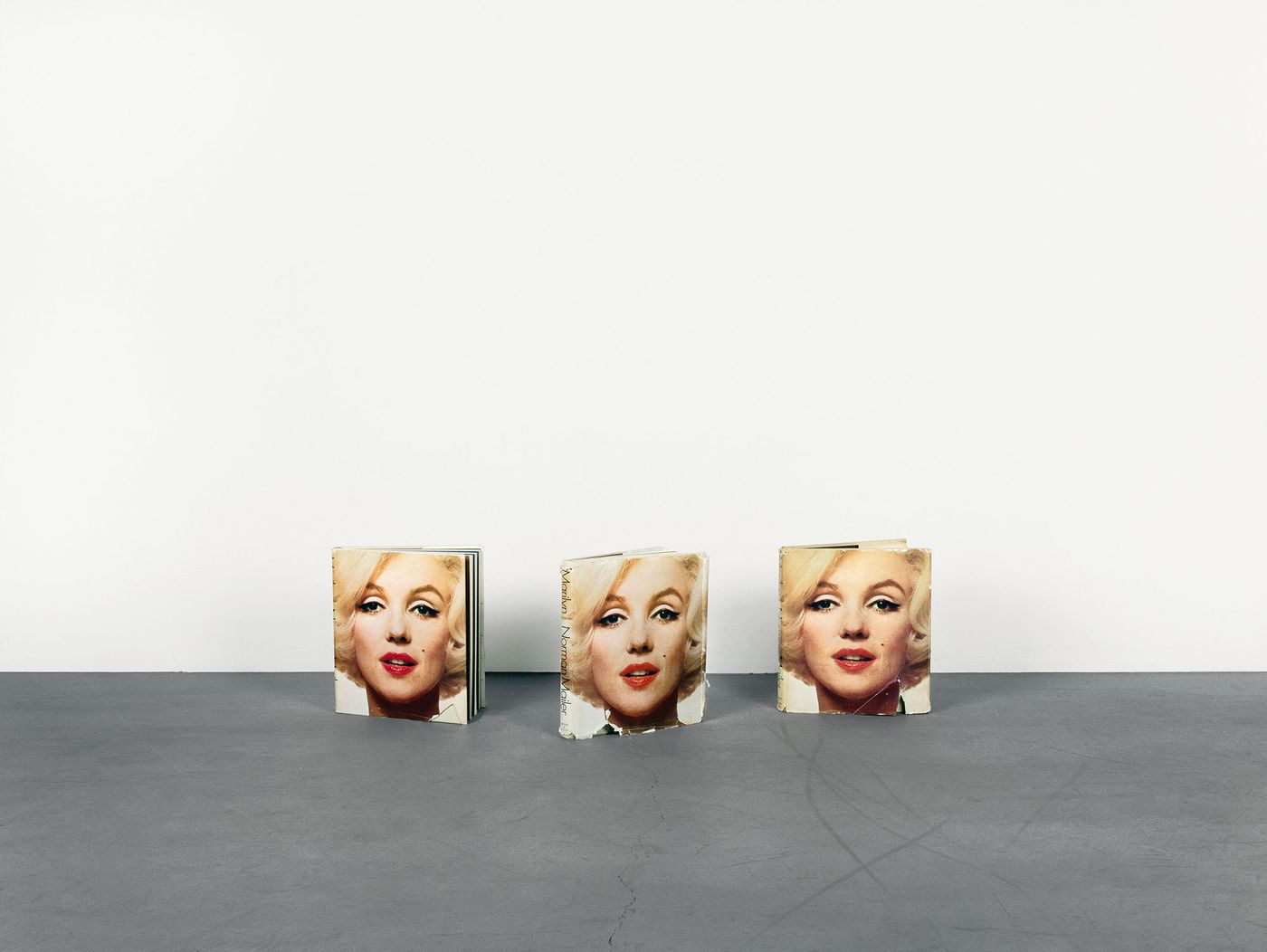
Anne Collier (b.1970), Studio Floor #3 (Marilyn, Norman Mailer), 2009, c-print, 42 1/4 x 56 1/4 in. (107.2 x 142.7 cm). Courtesy of the artist; Anton Kern Gallery, New York; Marc Foxx Gallery, Los Angeles; The Modern Institute/ Toby Webster Ltd., Glasgow; Galerie Neu, Berlin / © Anne Collier.
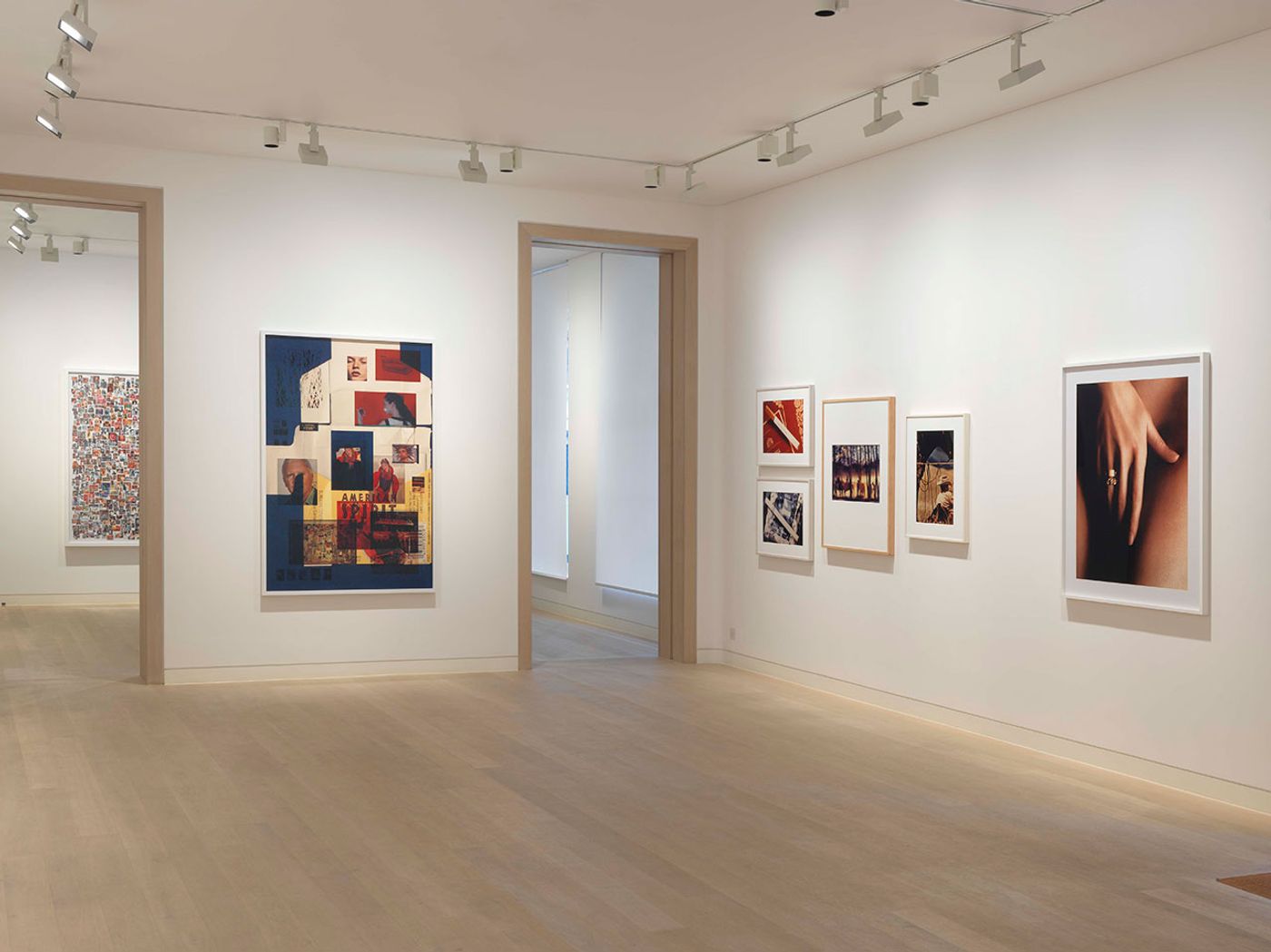
Double Take exhibition view. Courtesy Skarstedt Gallery, London.
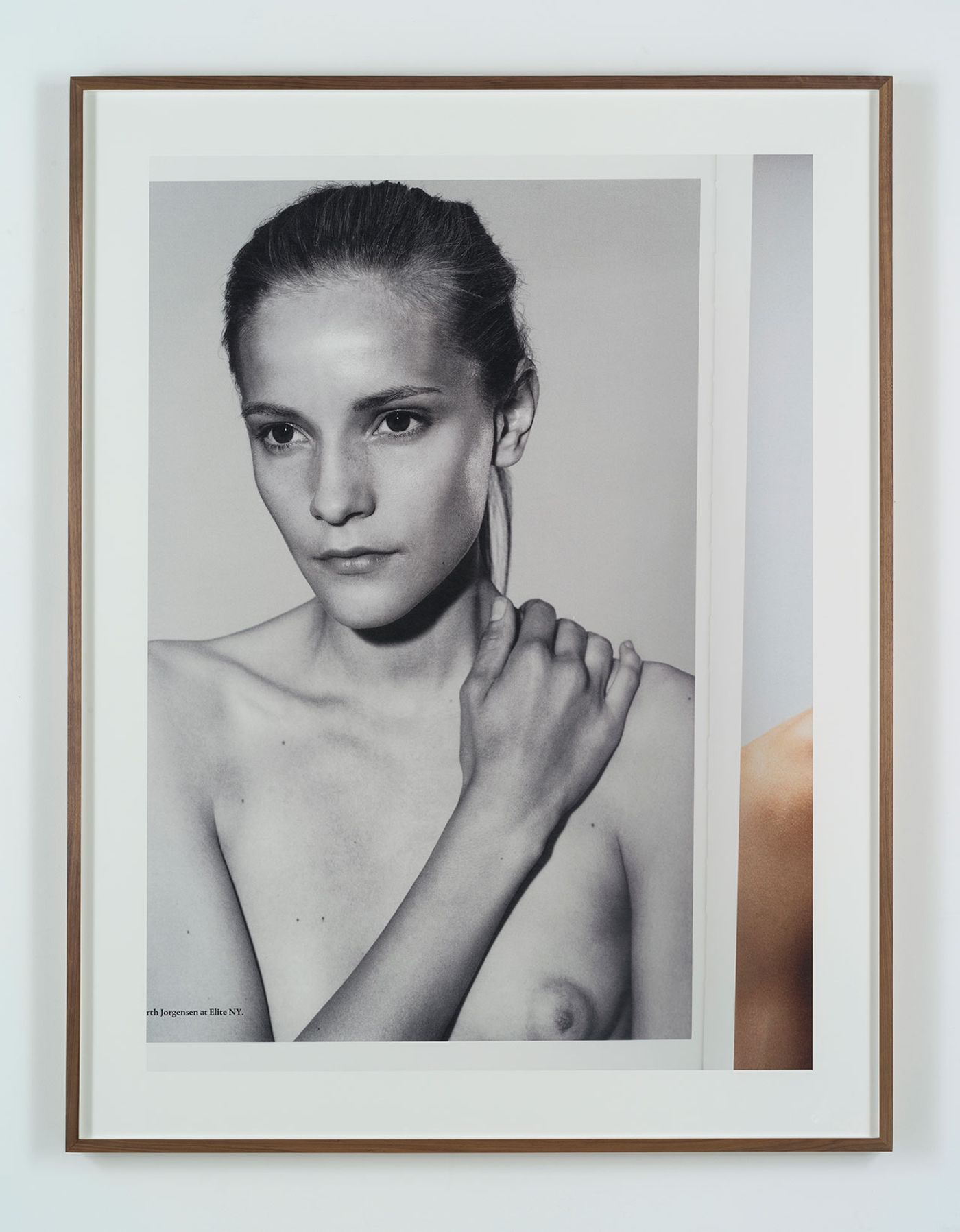
Collier Schorr (b. 1963), Dorothea, 2012, pigment print mounted on aluminum, 50 x 39 3/4 in. (127 x 101 cm.) image, 58 x 48 in. (147.3 x 121.9 cm.) framed. Copyright the artist. Courtesy Stuart Shave Modern
Art, London and 303 Gallery, New York.
The glossier images are by Collier Schorr and Roe Etheridge. Closely connected to the fashion world, their images may be easier on the eye, but are no less infused with visual markers that draw attention to the malleability of images. ‘Double Jess Gold’ by Etheridge takes a holiday snap and glamorizes it by juxtaposing various layers, while Collier Schorr’s Dorothea is a straightforward editorialized portrait at first sight – until you notice the contact sheet’s edges, subtly opening up the possible variations of what in a magazine seems to be the one and only image.
Anne Collier offers the more disorienting works in the show. ‘Woman with a Camera’, one of her various iterations with this title, talks both of herself and her subject: the woman as an object but also as an actor – a work with an almost existential element. Even more haunting is ‘Studio Floor #3 (Marilyn, Norman Mailer)’. Complex and layered – it is a photograph of three Marilyn Monroe books with a Norman Mailer photograph on the cover – it shows Monroe, the actress, as a still-life, almost exanimate, positioned threefold on a floor, with faint rips visible on the book cover paper. Collier shows us a complicated representation of the iconic actress, a woman whose life was run by others, hinting at the idea that the cracks in reality are always there, however small, even in our idealized representations of it.

Double Take exhibition view. Courtesy Skarstedt Gallery, London.
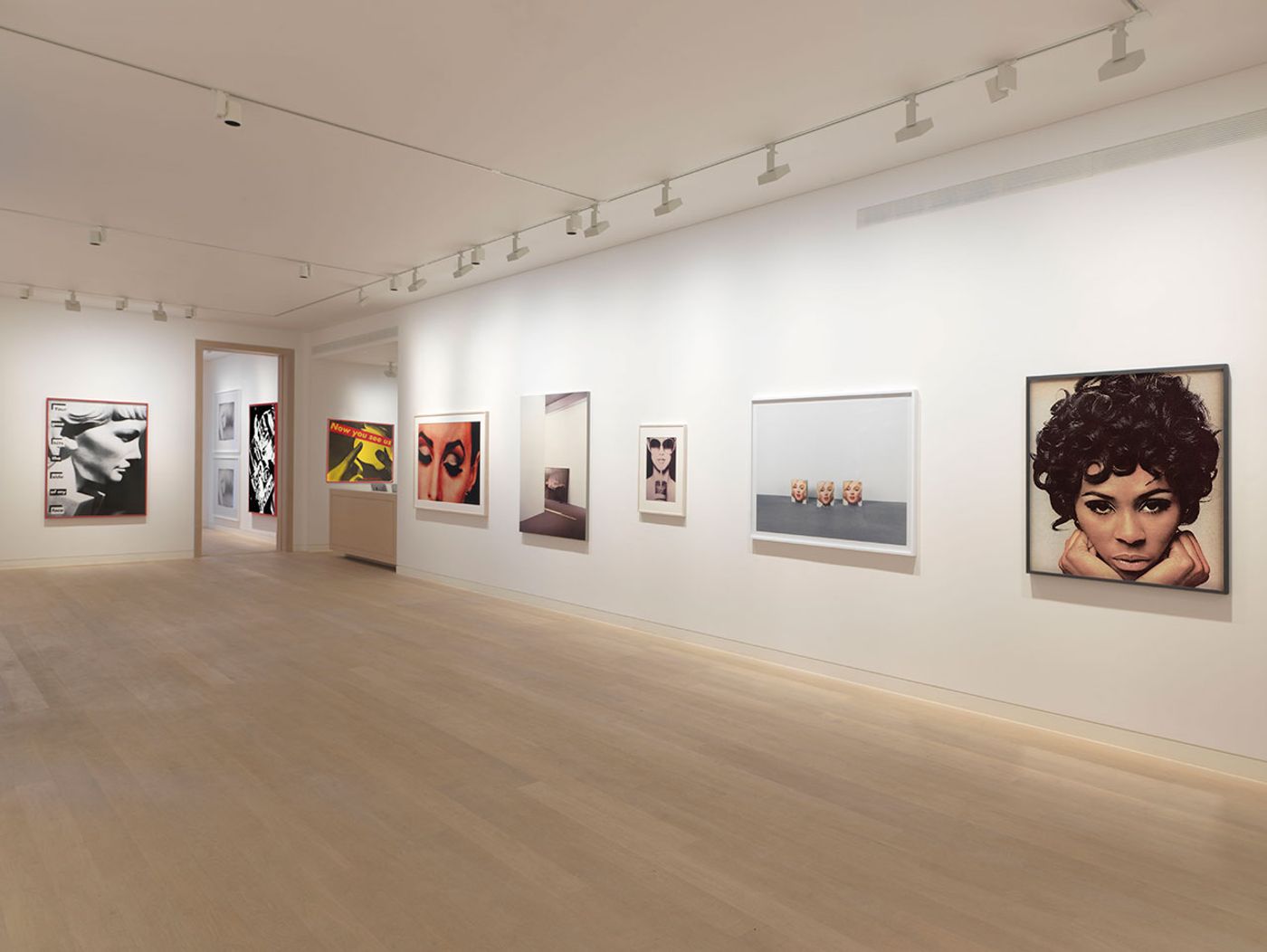
Double Take exhibition view. Courtesy Skarstedt Gallery, London.
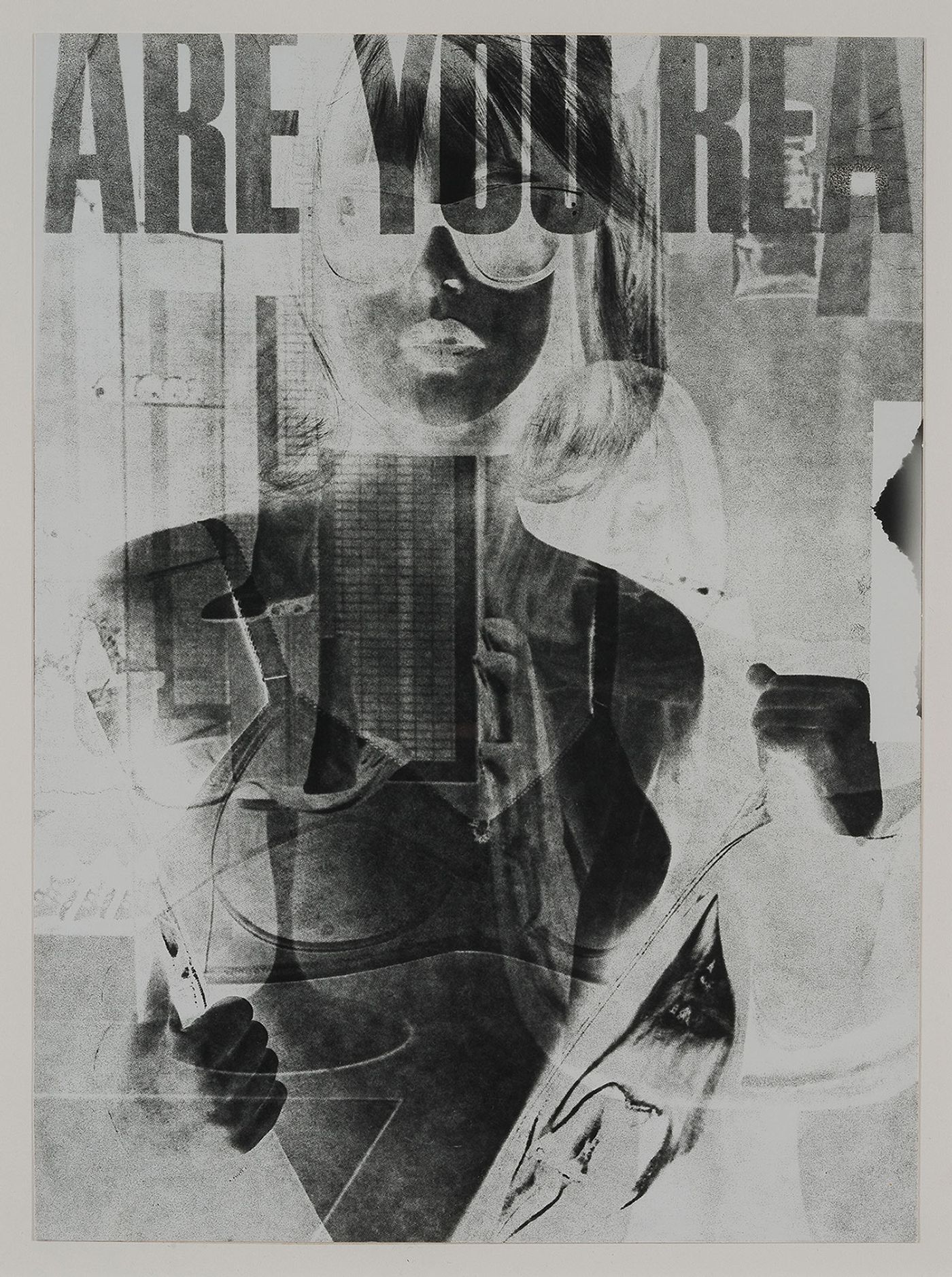
Robert Heinecken (1931 - 2006), Are You Rea (detail), 1964 -68. from a series of twenty-five gelatin silver print photograms from magazine pages, 11 3/4 x 9 in. (29.8 x 22.9 cm.) each framed © The Robert Heinecken Trust, courtesy of Cherry and Martin, Los Angeles.
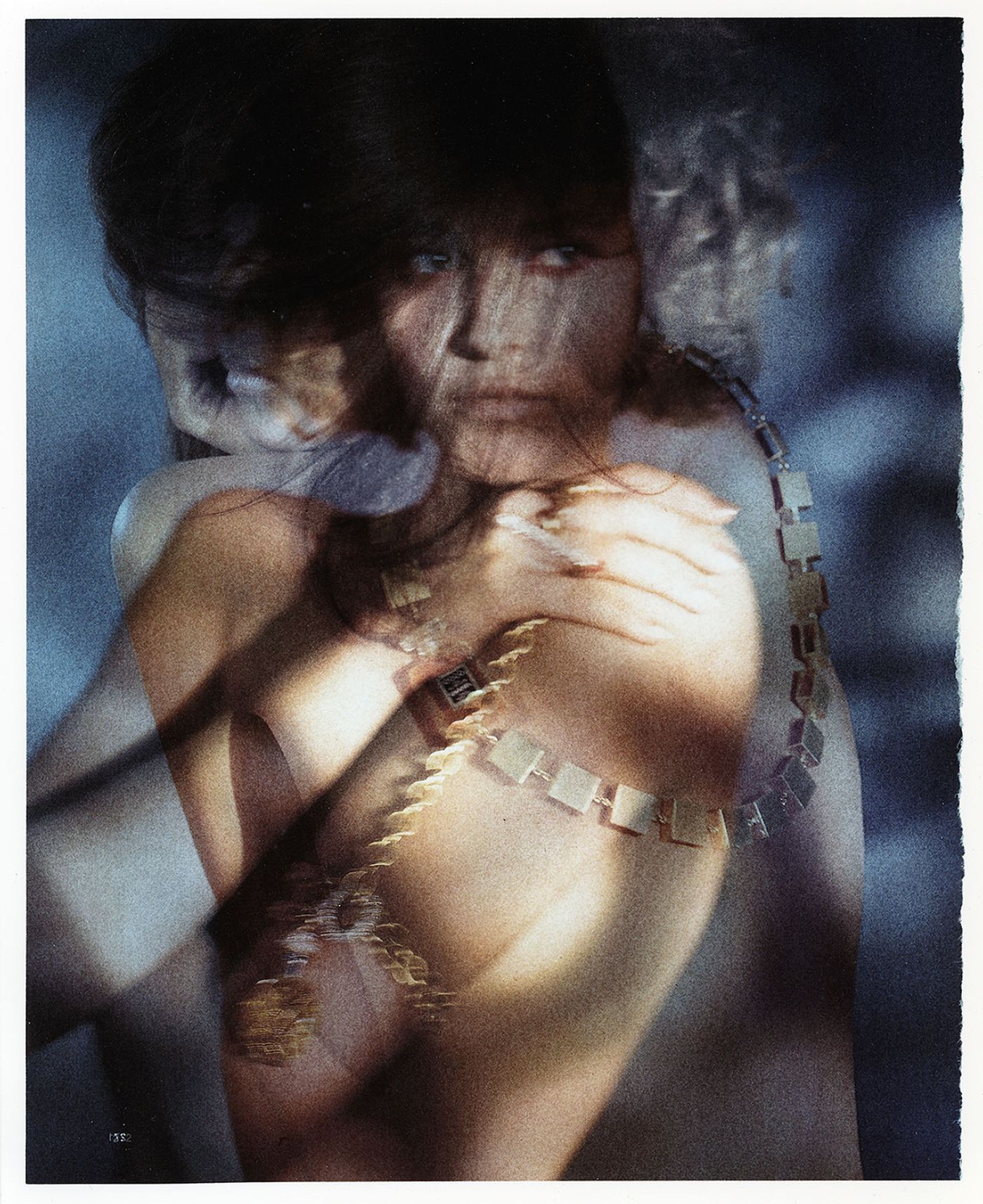
Robert Heinecken (1931 - 2006), Two Women - T, 1987, dye bleach print of a magazine page, 14 x 11 in. (35.6 x 27.9 cm.) © The Robert Heinecken Trust, courtesy of Cherry
and Martin, Los Angeles.